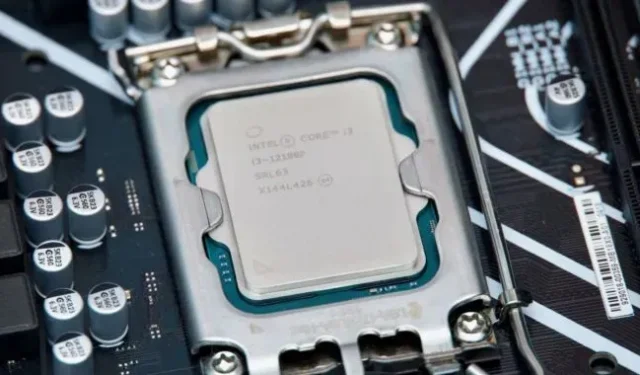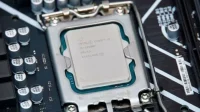It was not the best time to build a computer on a tight budget. This is partly due to ongoing supply issues and a particularly severe shortage of GPUs (although the situation may gradually decrease). This is partly because the products on offer haven’t improved much lately – Intel’s best budget and mid-range processors are stuck on legacy architectures due to manufacturing issues, and AMD has opted to focus on high-end products instead.
In anticipation of AMD’s new sub-$200 processors today, we’re taking a look at a couple of the best sub-$200 Intel processors in recent years. The Core i5-12400 ($210 with GPU, $180 without) is a six-core processor that offers great performance for budget gaming PCs and anyone who wants to do light photo and video editing work without spending a ton of money. The Core i3-12100 (about $150 with GPU or $120 without it) is a quad-core chip that can run games when paired with the GPU, but is perfect for web browsing, office and school work, video calls, and everything, what you need. may be required from a basic desktop in a home office setup.
Performance and Energy Efficiency
First of all, we compare the Core i3-12100 and Core i5-12400 with their immediate predecessors: Core i3-10100, Core i5-10400 and Core i5-11400. We also added the Ryzen 5 3600 as a point of comparison, which used to sell for $200 but wasn’t widely available at that price for a while; comparisons to newer Ryzen 5 5500 and 5600 processors will follow once these chips are released.
Some details about our testing systems:
- Intel Core i5-12400 (six P-cores) on Asus Prime B660-Plus D4 motherboard with 64GB DDR4 3200MHz RAM from Crucial and GeForce RTX 3070 FTW3 from EVGA. Tests were run with Intel’s default power settings and Asus’ performance boost enabled.
- Same system with Core i3-12100 installed (four P-cores).
- Same system with Core i7-12700 installed (eight P-cores, four E-cores).
- AMD Ryzen 5 3600 on Gigabyte B550M DS3H motherboard with 16GB DDR4 3200MHz RAM.
- For integrated GPU tests, we also used an AMD Ryzen 7 5700G processor on a Gigabyte B450 Aorus Pro Wifi I motherboard with 16GB DDR4 RAM at 3200MHz.
We chose to use a B660-based DDR4 motherboard to run all of our tests on these processors, since that’s the kind of board you’d pair these chips with if you were really building a budget PC. You can always install a Core i3 or i5 chip on an expensive Z690 motherboard with DDR5 RAM, but you’ll pay a lot more money for little return on that investment. For the sake of consistency, all processors have also been paired with a Vetroo V5 CPU fan, a budget air cooler that provides a step up from the built-in fan that comes with these processors.
Alder Lake’s single-core performance is impressive no matter which of these processors you buy; the new chips are easily ahead of their 10th and 11th gen counterparts and the Ryzen 5 3600. This is important to keep overall performance (and most games) high.
In terms of multi-core performance, note that the quad-core Core i3-12100 either outperforms or comes close to the six-core Core i5-10400 in our Cinebench and Handbrake tests – there are fewer cores, but they are much faster. In these tests, the Core i5-12400 also outperforms previous generation Intel processors and the Ryzen 5 3600. But if you do a lot of CPU-bound rendering or video editing tasks, note that there is a significant gap between the i5-12400 and the i7-12700. especially if you increase the power limits of the i7. Two additional P-cores and four E-cores make it much more productive when you use all those cores at the same time.
When comparing power efficiency, it’s worth noting that using Intel’s stock power settings, the overall system power consumption in our Handbrake encoding test doesn’t differ much when using any of these processors. This means that any system that can get the job done the fastest is usually the most efficient. The only time this curve breaks is when you increase the power limits on higher-end processors, allowing you to get work done quickly at the expense of efficiency.
You’ll also notice, as in our Mac Studio review, the relative inefficiency of midrange Intel processors compared to Apple’s M1 chips. Intel processors are fast (the M1 traded blows with the Core i3 throughout our testing), but Apple’s chips draw far less power. Of course, if you’re buying a PC primarily for gaming, it doesn’t matter how good the M1 is because it can’t run Windows or games that require Windows. But it’s worth keeping this comparison in mind when considering Intel’s overall market position and Apple’s recent loss as a customer.


